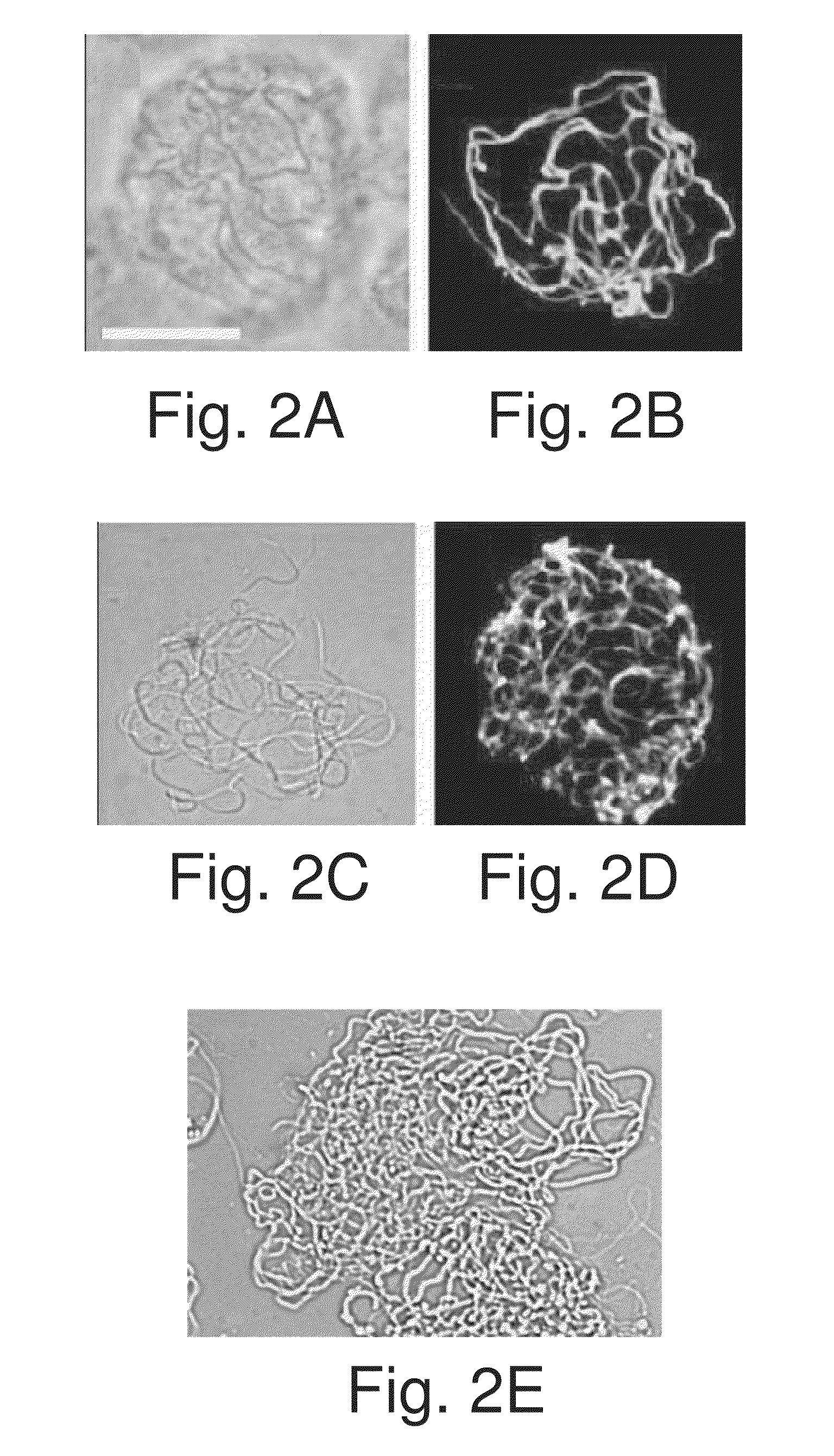Synthetic Dragline Spider Silk-Like Proteins
a technology of spider silk and protein, applied in the field of recombinant spider silk protein analogs, can solve the problems of premature termination, wide scope of applications for which dragline spider silk may be used, and inability to culture spiders in captivity
- Summary
- Abstract
- Description
- Claims
- Application Information
AI Technical Summary
Benefits of technology
Problems solved by technology
Method used
Image
Examples
example 1
Design, Expression and Characterization of a Multiple Repeat Dragline-Like Protein
[0320]In previous studies, the inventors have established a model system for self-assembly of dragline proteins [Huemmerich, D. et al., Curr. Biol. 2004, 14, 2070-2074] and made use of it to determine the role of the nonrepetitive C-terminal domain and of its conserved cysteine residue, as well as to present a proposed 3D structure of this domain [Ittah, S. et al., Biomacromolecules 2006, 7, 1790-1795; Ittah, S. et al., Biomacromolecules 2007, 8, 2768-2773]. In the current disclosure, the inventors provide the structure and function of the repetitive part of the dragline silk, which is the major domain of the natural MaSp, constituting about 90% of its residues. When designing the synthetic unit, it was assumed that there is little significance for the small variability between the native repetitive units for expression in the experimental system. Thus, the 15 repeat sequences of the native ADF4 (Geneb...
example 2
Analysis of Impact of Consensus Sequence Repeat Number on Dragline-Like Protein Expression Phenotype
[0324]To enhance the understanding of the repetitive sequence, the inventors explored the influence of the number of repeats on the protein pattern of assembly and fiber-forming properties. For this purpose, first analyzed was the effect of increasing the number of the repeats, which would render the proteins closer in repeat number to the natural spider silk proteins that usually contain hundreds of repeats. Thus, three additional baculoviruses were engineered that contained 20, 24, and 32 repeats. Because of cloning constraints, resulting from the repetitive nature and size of the coding sequence, 32 repeats (equal to 1283 aa) was the upper limit achievable. Sf9 cells were infected by the recombinant baculoviruses and all produced fibers, which resembled the 16 repeats fibers when viewed by immunostaining in a confocal microscope, shown in FIG. 2D. Testing for chemical resistance an...
example 3
Ultrastructural Analysis of the Multiple Consensus Sequence Repeat Dragline-Like Protein
[0330]Intrigued by the different assembly phenotypes, the inventors turned to ultrastructural analysis using TEM to gain more insights regarding the assembly process of the natural and synthetic proteins. Before this study, TEM was used to study the dragline like r-ADF4 fibers produced in insect cells and it has been reported that they are composed of a nanofibrils network [Huemmerich, D. et al., Curr. Biol. 2004, 14, 2070-2074]. The inventors now explored whether TEM would show any difference between the synthetic fibers introduced here to the prior, more “natural”, r-ADF4 fibers and whether any ultrastructural changes could be discerned between fibers of varying repeat numbers.
[0331]Several types of fibers, including the previously reported r-ADF4 fibers of the inventors, were purified from infected cells, mounted on EM grids without further treatment, or negatively stained with NanoVan, a vana...
PUM
| Property | Measurement | Unit |
|---|---|---|
| molecular weight | aaaaa | aaaaa |
| diameter | aaaaa | aaaaa |
| diameter | aaaaa | aaaaa |
Abstract
Description
Claims
Application Information
 Login to View More
Login to View More - R&D
- Intellectual Property
- Life Sciences
- Materials
- Tech Scout
- Unparalleled Data Quality
- Higher Quality Content
- 60% Fewer Hallucinations
Browse by: Latest US Patents, China's latest patents, Technical Efficacy Thesaurus, Application Domain, Technology Topic, Popular Technical Reports.
© 2025 PatSnap. All rights reserved.Legal|Privacy policy|Modern Slavery Act Transparency Statement|Sitemap|About US| Contact US: help@patsnap.com



